 Limited Edition Golden Llama is here! Check out how you can get one.
Limited Edition Golden Llama is here! Check out how you can get one.  Limited Edition Golden Llama is here! Check out how you can get one.
Limited Edition Golden Llama is here! Check out how you can get one.
 Offering SPR-BLI Services - Proteins provided for free!
Offering SPR-BLI Services - Proteins provided for free! Get your ComboX free sample to test now!
Get your ComboX free sample to test now!
 Time Limited Offer: Welcome Gift for New Customers !
Time Limited Offer: Welcome Gift for New Customers !  Shipping Price Reduction for EU Regions
Shipping Price Reduction for EU Regions
> Proteínas transmembrana multipaso y plataformas tecnológicas
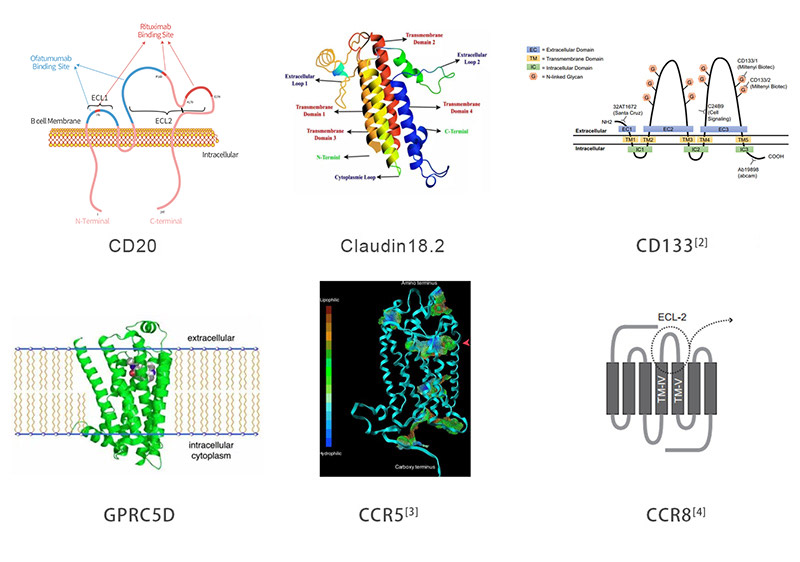
La plataforma de tecnología VLP (partículas similares a virus) basada en el sistema de expresión HEK293 está especialmente configurada por ACROBiosystems para expresar TP en la superficie de la célula huésped. La proteína de la cubierta/cápside viral luego convierte estas superficies celulares en partículas de bicapa lipídica soluble con proteínas altamente concentradas susceptibles de inmunización y detección de anticuerpos. El complejo proteína de membrana-VLP muestra TP de múltiples pasos plegados correctamente en su membrana celular, induce y analiza anticuerpos funcionales que reconocen la conformación natural del objetivo. Además de proporcionar TP de múltiples pasos basados en VLP en nuestro catálogo, ACRO brinda servicios personalizados también.
La región transmembrana de los TP multipaso es altamente hidrofóbica y es difícil mantener la conformación correcta en tampones ordinarios una vez extraídos de la membrana celular. Este problema se puede resolver mediante la adición de detergentes. ACROBiosystems ha establecido una plataforma completa para la expresión, purificación y estabilización de células de insectos y células de mamíferos para objetivos fármacos complejos TP ACRO realiza cribado de detergentes, incluidos DDM/CHS (Cat. No. DC-11) para aumentar la solubilidad y asegurar el plegamiento nativo de esta proteína in vitro.
"Nanodisc" es una estructura de membrana de bicapa de fosfolípidos sintética compuesta de proteínas de andamiaje de membrana (MSP) y moléculas de fosfolípidos. TP se puede integrar en la estructura especial de Nanodisc después de la eliminación del detergente para mantener su plegamiento nativo, retener su actividad biológica y exhibir hidrofilia mejorada para una amplia gama de aplicaciones. Por ejemplo, la formulación sin detergente de Nanodisco basada en TP es compatible con las pruebas de expresión de CAR. ACROBiosystems realizó una optimización y mejora continuas del proceso de ensamblaje para que sea adecuado para la producción a escala industrial. Los esfuerzos de ACRO han asegurado un suministro estable a largo plazo de productos TP basados en Nanodisc para la industria biofarmacéutica.
VLP
Micela detergente
Nanodisco
| Molecule | Cat. No. | Product Description | Application | Preorder/Order |
|---|
| Molecule | Cat. No. | Product Description | Application | Preorder/Order |
|---|
| Molecule | Cat. No. | Product Description | Application | Preorder/Order |
|---|
Los siguientes protocolos SPR están disponibles de forma gratuita.
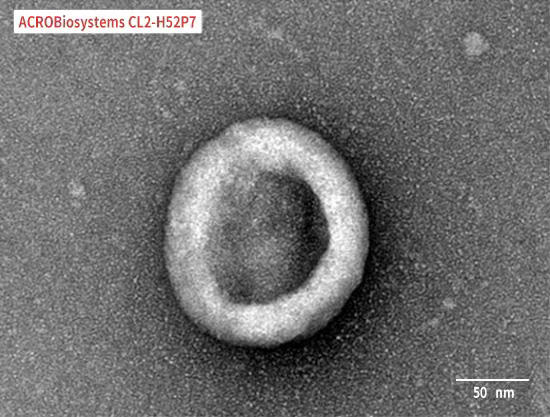
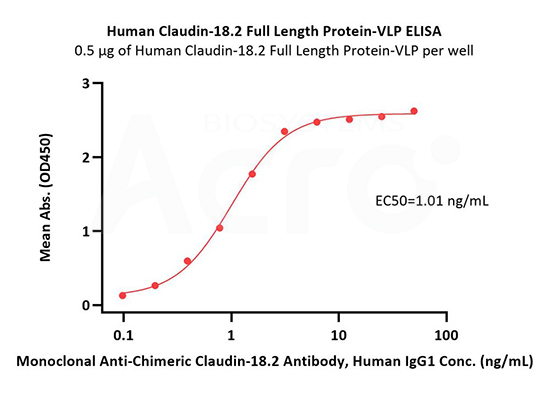
Immobilized Human Claudin-18.2 Full Length Protein-VLP (Cat. No. CL2-H52P7) at 5 μg/mL (100 μL/well) can bind Monoclonal Anti-Chimeric Claudin-18.2 Antibody, Human IgG1 with a linear range of 0.2-3 ng/mL (QC tested).
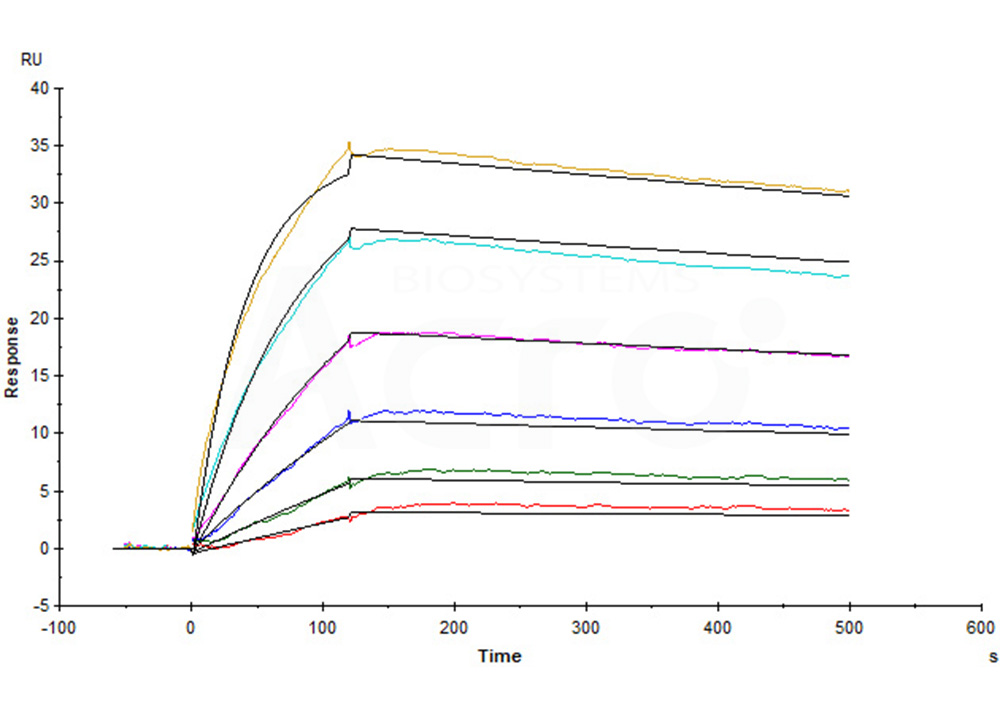
Human Claudin-18.2 Full Length Protein-VLP (Cat. No. CL2-H52P7) captured on CM5 Chip via Anti-Claudin-18.2 antibody can bind Anti-Claudin-18.2 antibody with an affinity constant of 0.374 nM as determined in a SPR assay (Biacore T200) (Routinely tested).
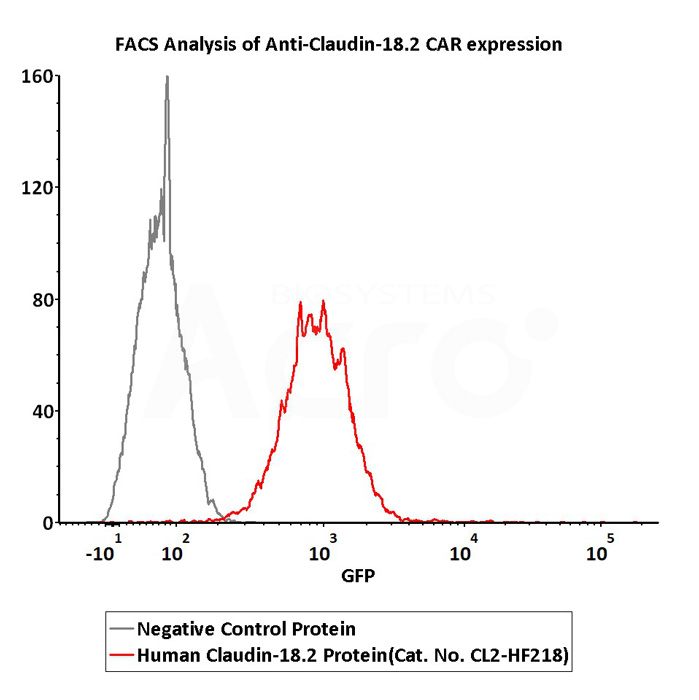
2e5 of Anti-Claudin-18.2 CAR-293 cells were stained with 100 μL of 3 μg/mL of Fluorescent Human Claudin-18.2 Full Length Protein-VLP (Cat. No.CL2-HF218) and negative control protein respectively, FITC signals was used to evaluate the binding activity (QC tested).
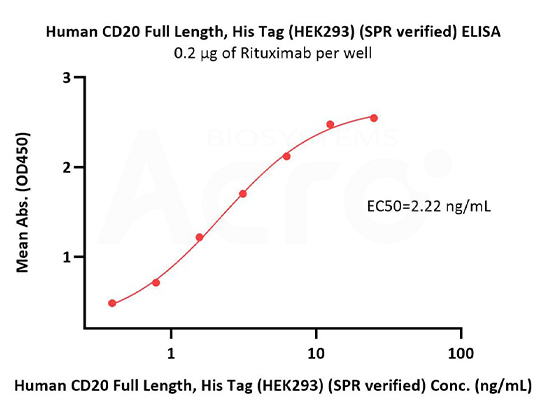
Immobilized Rituximab at 2 μg/mL (100 μL/well) can bind Human CD20 Full Length Protein, His Tag (Cat. No. CD0-H52H3) with a linear range of 0.4-3 ng/mL (in presence of DDM and CHS) (QC tested).
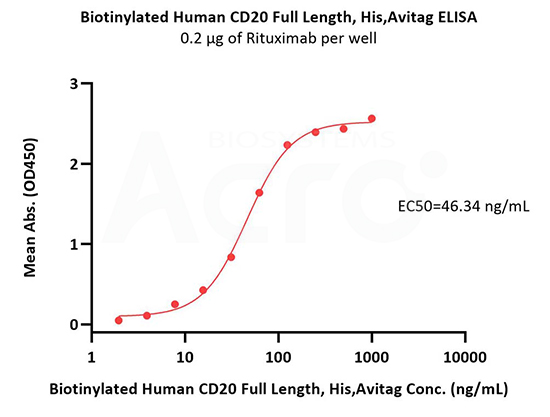
Immobilized Rituximab at 2 μg/mL (100 μL/well) can bind Biotinylated Human CD20 Full Length, His,Avitag (Cat. No. CD0-H82E5) with a linear range of 4-63 ng/mL (in presence of DDM and CHS) (QC tested).
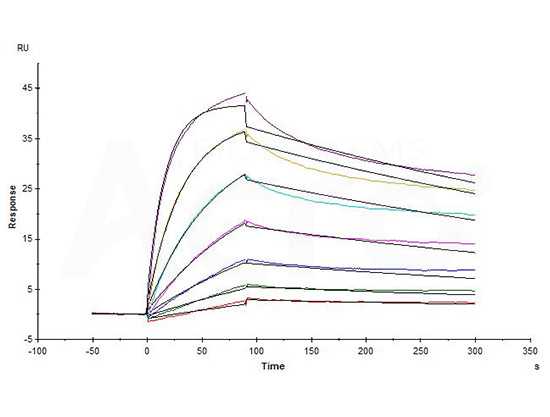
Biotinylated Human CD20 Full Length, His,Avitag (Cat. No. CD0-H82E5) captured on Biotin CAP-Series S Sensor Chip can bind Rituximab with an affinity constant of 1.73 nM as determined in a SPR assay (in presence of DDM and CHS) (Biacore T200) (QC tested).

Human CD133 Full Length, His Tag (Nanodisc) (Cat. No. CD3-H52H1) on SDS-PAGE under reducing (R) condition. The gel was stained overnight with Coomassie Blue. The purity of the protein is greater than 90%.
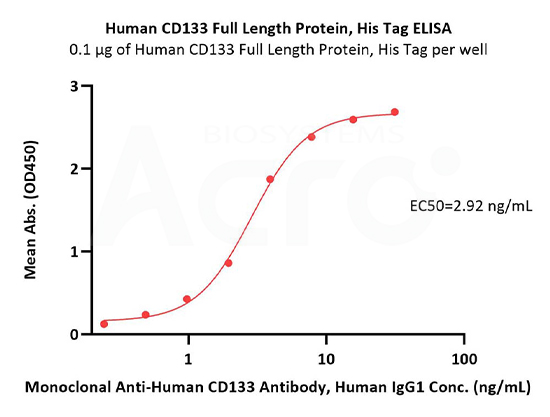
Immobilized Human CD133 Full Length Protein, His Tag (Cat. No. CD3-H52H1) at 1 μg/mL (100 μL/well) can bind Monoclonal Anti-Human CD133 Antibody, Human IgG1 with a linear range of 0.2-4 ng/mL (QC tested).

Authors: Lionel Rougé et al.
Journal: Science
Authors: Paige M. Glumac , Aaron M. LeBeau.
Journal: Glumac and LeBeau Clin Trans Med
Authors: Kenji Maeda, Debananda Das et al.
Journal: Journal of Biological Chemistry
Authors: Line Barington, Pia C. Rummel, et al.
Journal: Journal of Biological Chemistry
This web search service is supported by Google Inc.
